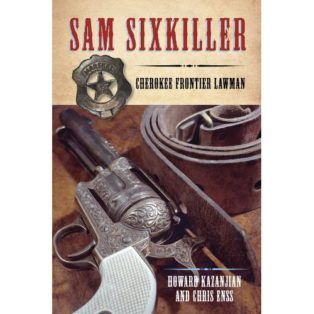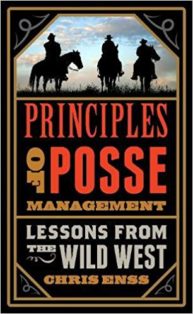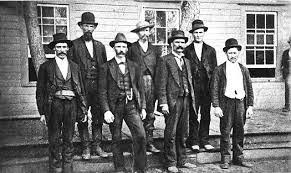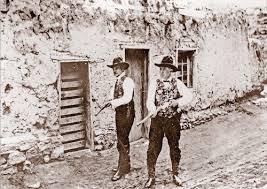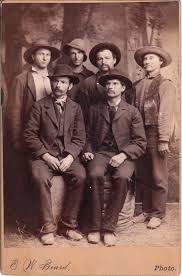Enter now to win a copy of
Sam Sixkiller: Frontier Cherokee Lawman

Lawman Sam Sixkiller led his horse through a belt of sparse timber along the Illinois River in southeast Oklahoma Territory. He was a stocky, dark-skinned, heavy-shouldered man with a neatly trimmed, droopy mustache and small dark eyes that were flatly calculating. His eyes shifted purposefully from the streams of sunlight off a growth of blackberry bushes to the rocky path dancing before him. Apart from the sound of his roan’s hooves slowly moving through the sweet-gum shrubs and short grass, the only noise was a mingling of a trio of agitated voices wafting through the warm air.
Sam urged his horse into a clearing where three half-blood Cherokee-Seminole Indians sat playing dice. In between rolls of the dice, the men drank from an amber-colored bottle that they eagerly shared with each other. Scattered beside the men were four empty liquor bottles. The drunken Indians barely noticed Sam slowly inching his horse into their crude camp.
The men were undisturbed by Sam’s presence and continued with their game. They argued over whose turn it was, nearly coming to blows over which player went next. Sam watched them toss the dice on a thick blanket. At first glance the dusty blanket appeared to be draped over a log. The closer he got to the action the more it became clear that the makeshift table was actually the body of a fourth Indian. A dark red stream of dried blood had trickled out from under the covering and pooled around a stand of bright orange butterfly weed.
Sam scrutinized the scene more carefully and spotted a massive knife within reach of the Indian closest to him. Sam casually pushed his jacket over the six-shooter strapped on his side, revealing not only the weapon but also the slightly tarnished badge that showed he was a member of the Cherokee Nation police force. One by one the men turned and looked at the lawman. For a breathless instant Sam watched the knife, expecting one of the Indians to snap it up. Without saying a word the three got to their feet, wavering a bit as they did so.
Sam pulled his gun out of his holster and leveled it at the men as he eased his five-foot eight-inch frame off his horse. He motioned for the men to back away from the body, and they reluctantly complied.
Disgusted, Sam walked over to one of the bottles and kicked it hard. It spun into a nearby rock and broke. What little booze was left inside spilled out and quickly soaked into the dry land.
Sam made his way to the motionless man on the ground and, using the toe of his boot, rolled him over on top of the blanket. The man was dead. There was a deep cut across his throat, and his limbs were stiff.
Possession of liquor on Indian land was a criminal offense. Since being appointed captain of the Indian Police at Union Agency in Muskogee, Creek Nation, in February 1880, Sam had arrested numerous buyers and sellers of liquor. The effect liquor had on many of the men and women in his jurisdiction threatened to destroy the Cherokee way of life.
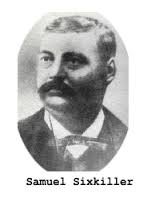
To learn more about this courageous lawman read
Sam Sixkiller: Frontier Cherokee Lawman

